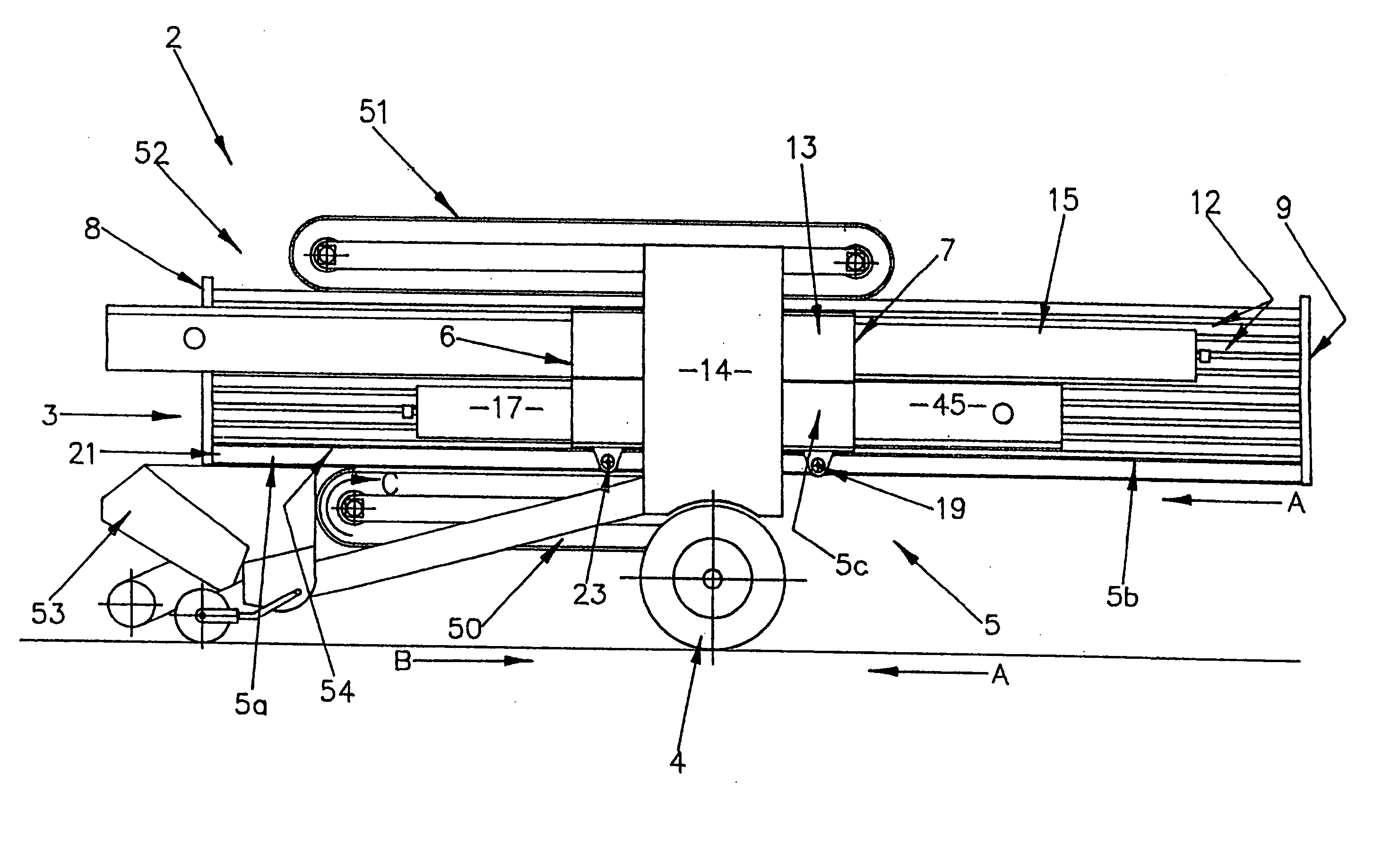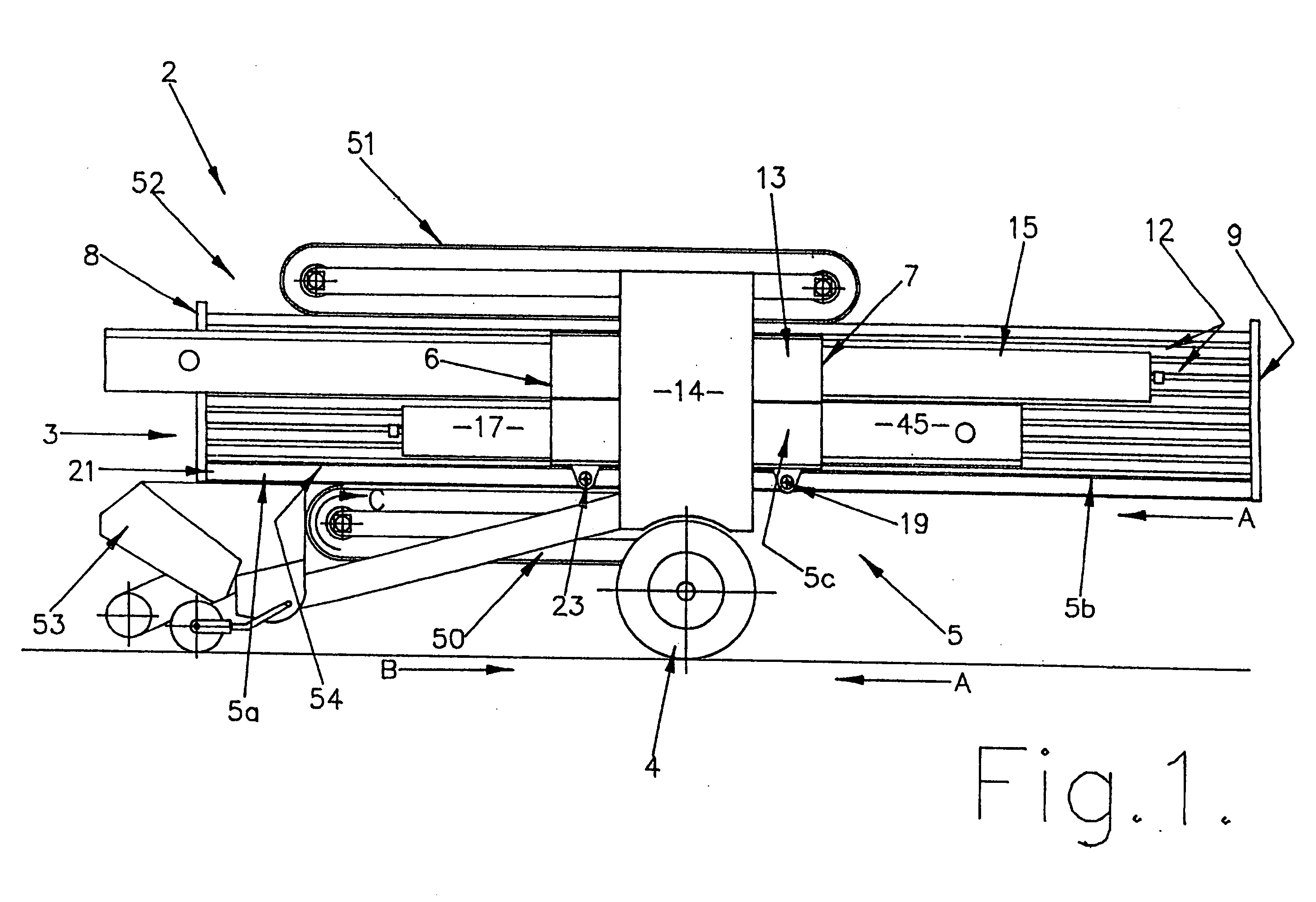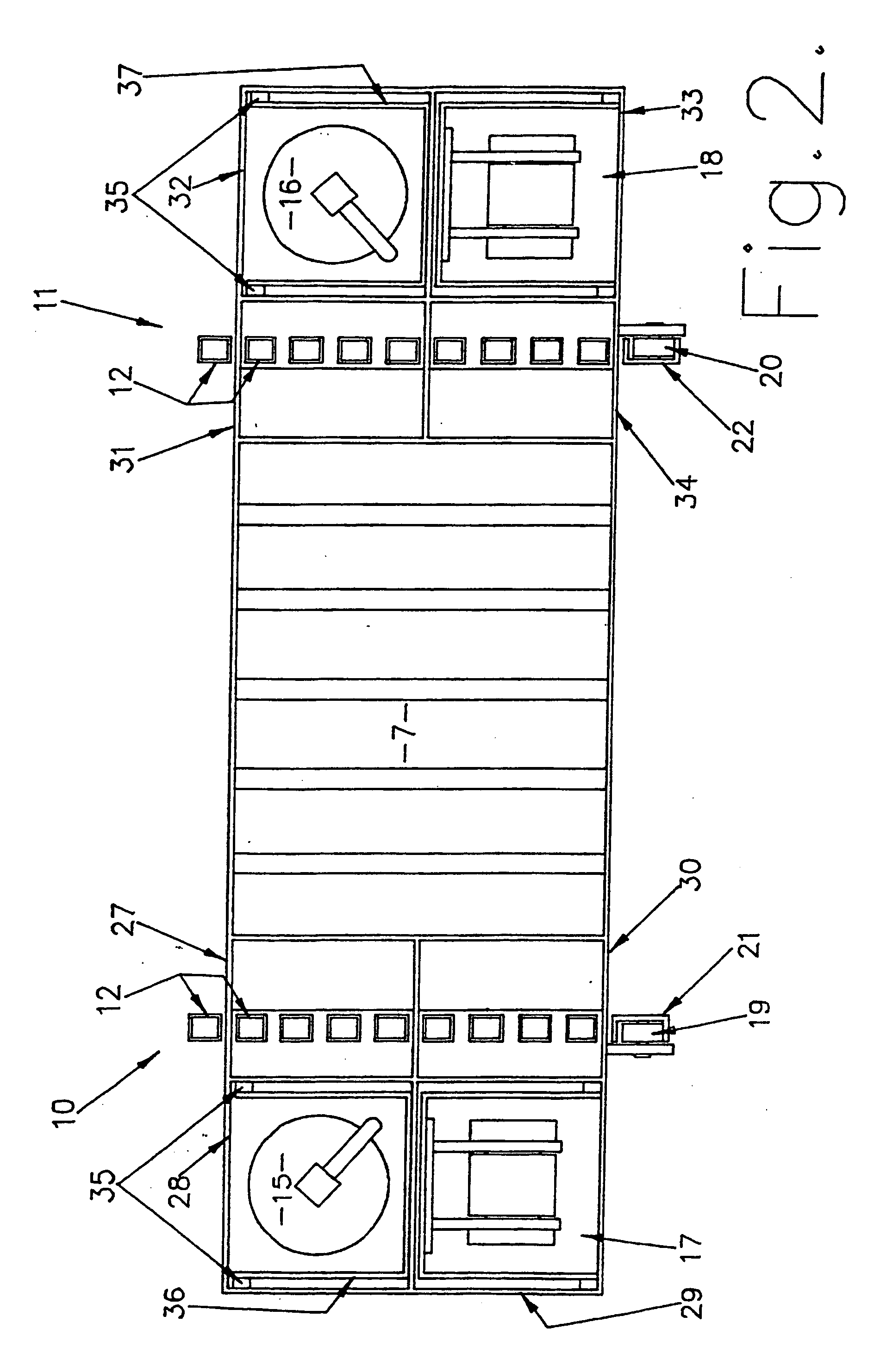Baling apparatus
a technology of baling apparatus and baling rod, which is applied in the field of baling rod, can solve the problems of hysteresis loss and the difficulty of safe movement of overlong equipment, and achieve the effect of reducing hysteresis loss
- Summary
- Abstract
- Description
- Claims
- Application Information
AI Technical Summary
Benefits of technology
Problems solved by technology
Method used
Image
Examples
Embodiment Construction
[0026] Referring to FIGS. 1-5 of the drawings, a baling apparatus 2 designed particularly for baling silage or similar fodder is constructed as a trailer unit adapted to be towed by means of a drawbar (not shown) mounted at the front 3 of the apparatus. The apparatus 2 is mounted on a pair of wheels 4.
[0027] The apparatus includes a central bale-forming compression chamber 5 which is fixed in height but which can be altered in length by moving a pair of gates 6, 7, towards or away from each other.
[0028] The forward gate 6 is movable from a position adjacent the forward end 8 to the fully-compressed position shown in FIG. 1. The rear gate 7 is movable from a position adjacent the rear end 9 to the position of FIG. 1. The gates 6, 7, can be moved independently of each other, but usually are moved simultaneously, as hereinafter described.
[0029] The chamber 5 is formed in three sections:—outer sections 5a and 5b and an inner section 5c. All sections are of the same height.
[0030] The...
PUM
 Login to View More
Login to View More Abstract
Description
Claims
Application Information
 Login to View More
Login to View More - R&D
- Intellectual Property
- Life Sciences
- Materials
- Tech Scout
- Unparalleled Data Quality
- Higher Quality Content
- 60% Fewer Hallucinations
Browse by: Latest US Patents, China's latest patents, Technical Efficacy Thesaurus, Application Domain, Technology Topic, Popular Technical Reports.
© 2025 PatSnap. All rights reserved.Legal|Privacy policy|Modern Slavery Act Transparency Statement|Sitemap|About US| Contact US: help@patsnap.com



